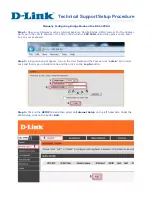
LN920 HW Design Guide
1VV0301730 Rev. 1
Page 47 of 81
2021-08-11
Not Subject to NDA
Input pins can only be read and report digital values (high or low) present on the pin at
the read time.
Output pins can only be set or the pin level can be queried.
PIN
Signal
I/O
Function
Type
NOTE
59
GPIO1
I/O
Can be ANTCTL0
1.8V
61
GPIO2
I/O
Can be ANTCTL1
1.8V
63
GPIO3
I/O
Can be ANTCTL2
1.8V
65
GPIO4
I/O
Can be ANTCTL3
1.8V
20
GPIO5
I/O
Can be I2S_CLK
1.8V
22
GPIO6
I/O
Can be I2S_DIN
1.8V
24
GPIO7
I/O
Can be I2S_DOUT
1.8V
28
GPIO8
I/O
Can be I2S_WS
1.8V
56
GPIO9
I/O
Can be I2C_SDA
1.8V
58
GPIO10
I/O
Can be I2C_SCL
1.8V
Table 21: LN920 Available GPIO
6.5.4.1.
Using a GPIO as INPUT
The GPIO pins, when used as inputs, can be connected to the digital output of another
device and report its status, provided that this device has interface levels compatible with
the 1.8V CMOS levels of the GPIO.
If the digital output of the device to be connected with the GPIO input pin of LN920 has
interface levels different from the 1.8V CMOS, then it can be buffered with an open
collector transistor with a 47K pull up to 1.8V.
Note: In order to avoid a back powering effect, it is recommended to
prevent any HIGH logic level signal from being applied to the digital
pins of the LN920 when the module is powered off or during an
ON/OFF transition. Refer to LN920 AT command reference guide for
GPIO pins configuration.
6.5.4.2.
Using a GPIO as OUTPUT
The GPIO pins, when used as outputs, can drive 1.8V CMOS digital devices or compatible
hardware. When set as outputs, the pins have a push-pull output, therefore the pull-up
resistor may be omitted.
















































